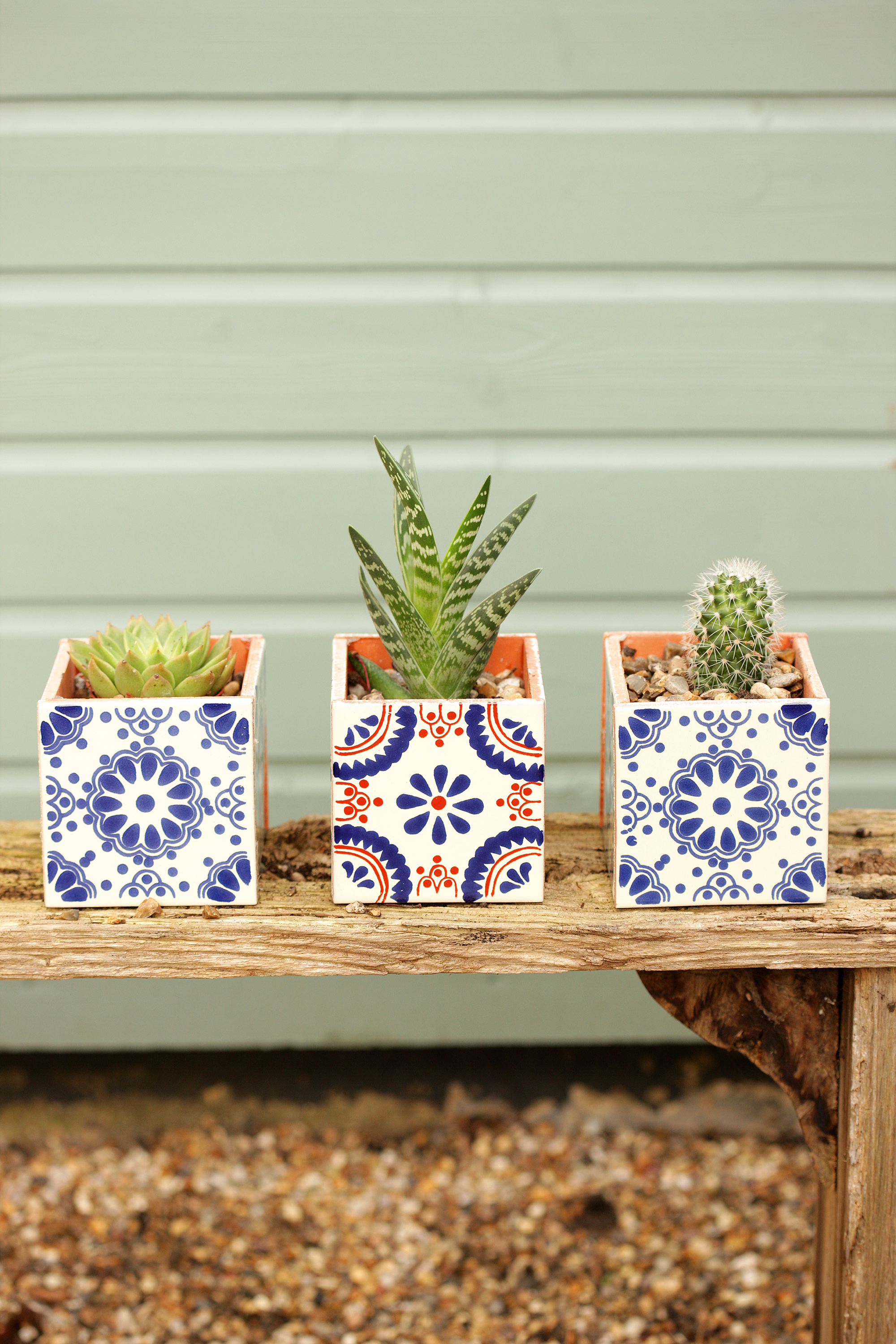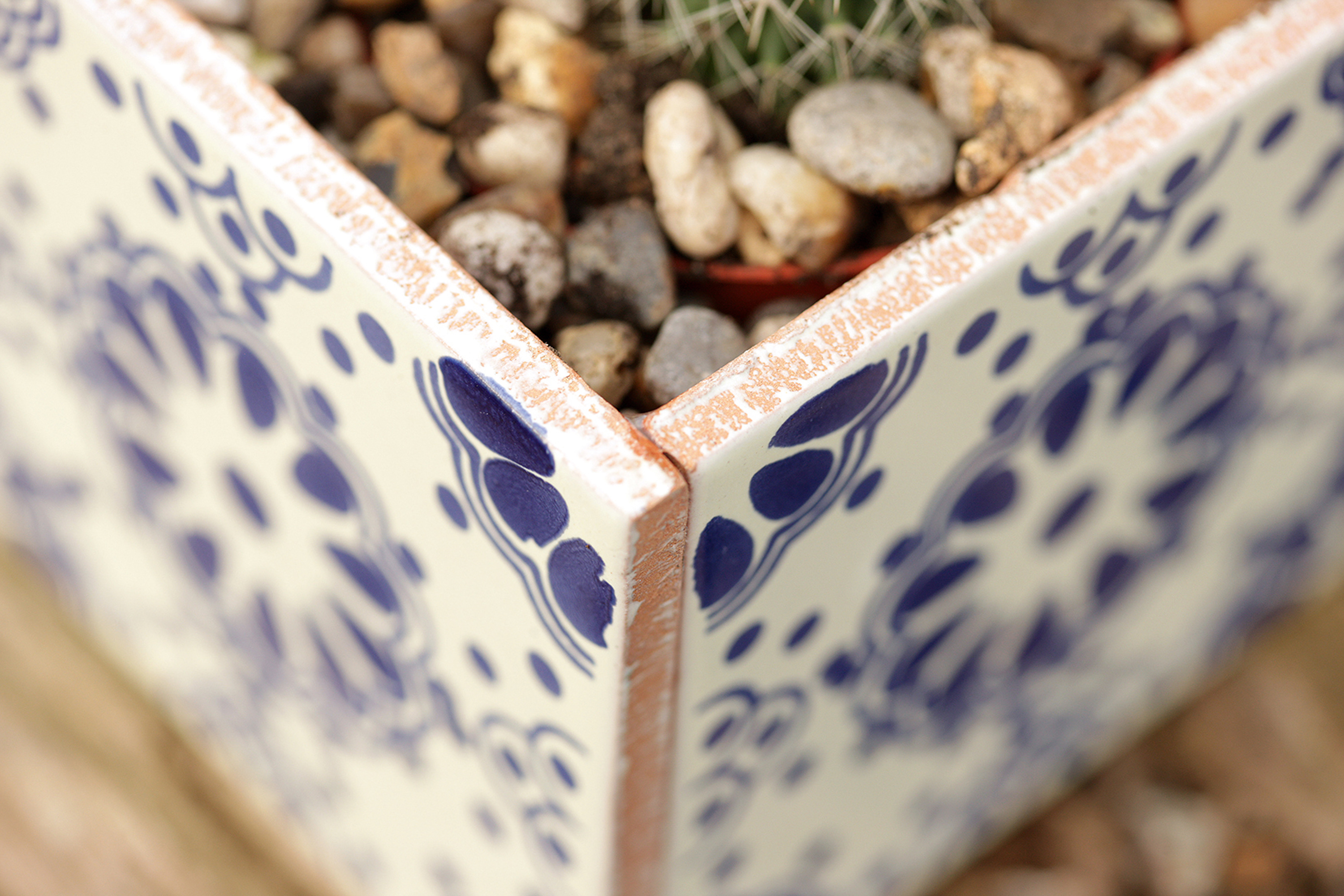How to make a tile plant pot in five easy steps: follow our quick guide
Learn how to make a tile plant pot with our easy guide and create a pretty display for your favorite succulents and cacti

Follow our guide on how to make a tile plant pot and not only will you have a set of stylish planters for displaying on a shelf, kitchen windowsill or garden table, but you'll also be doing your bit for the environment by recycling old plastic bottles in the process.
That's because plastic bottles are nestled inside these tile planters, forming the pot for your succulents or cacti. There are so many things you can do with a plastic bottle before you throw it away, and these pretty planters are a great example of how they can be put to good use!
Patterned tiles can be ordered new online or you might be able to salvage some from a home renovation project to make this an even more eco-friendly upcycling project. Even if they’re currently not-so pretty, you could use tile paint and stencils to give them a makeover in no time. Not to mention, decorating your own tiles will add an extra layer of fun and creativity to your project.
Keep scrolling for our step-by-step guide on how to make a tile plant pot, then check out our container gardening ideas for more ways to create interesting planting displays indoors and out.
How to make a tile plant pot
You will need:

- Empty 2ltr plastic bottle
- Patterned tiles
- All-purpose glue
- Small succulent plants and cacti
- Houseplant compost and grit
- Small pebbles or gravel
- Scissors
- Bradawl tool
Step 1: select your tiles
Ensure that the width of your tile is no smaller than the diameter of the plastic bottle. If you have smaller tiles then opt for a smaller plastic bottle. The bottles will be acting as a container which will sit inside your mosaic tile pot, so you will need one bottle per planter.
Thoroughly wash the plastic bottles out with soap and water and allow to dry completely. Doing this the night before will ensure that they are fully dry.
Step 2: create your tiled surround

While you’re waiting for your bottles to dry, position one tile on a flat surface with the right side down. Apply all-purpose glue along two opposite side edges and stick a tile to each at a 90 degree angle. Glue the remaining tile on top (to create a pot surround). Allow to dry.
Step 3: cut the plastic bottle insert to size
Measuring from the base of your plastic bottle against the height of your tile container, cut the top off the plastic bottle, about 1cm shorter than the tile height.
Step 4: create drainage holes in the bottle
Make small holes in the base of the bottle with a brawdawl. These are for drainage but we recommend removing the plastic pots from the tile container when watering to prevent waterlogging.
Step 5: fill with soil and plants
Fill the bottle with soil and position your small plants inside the bottle. Try a succulent and cactus, like in our pictures. Or you could go for a trio of herbs if you're thinking about how to create a herb garden for your kitchen windowsill or to go with your outdoor kitchen ideas.
Whatever plants you choose, make sure you check the plant labels for watering and light requirements to ensure you are giving your plant what it needs.
Position the planted plastic bottle base inside the tile planter and arrange in your chosen position. Group pots together or dot them along a shelf for a unique effect.
Caring for your new plants

Gardeners love cacti and succulents for their drought resistance and architectural shapes. And they make great indoor plants if you have limited access to outdoor space. Unlike a lot of houseplants, they positively love the dry air and warmth of central heating.
Of course, these plants are not indestructible, but they do need less water than most and tend to be slow growers – ideal for busy lifestyles. They’re relatively inexpensive, so it’s easy to build up a collection. Tender succulents such as echeveria can live outside in the summer, while hardy varieties such as sempervivums and sedums can survive outside all year.
There's more tips on how to grow succulents in our guide.
Top tip: Waterlogging is the quickest way to kill a succulent. Add up to 30% extra grit to houseplant compost to help ensure good drainage
